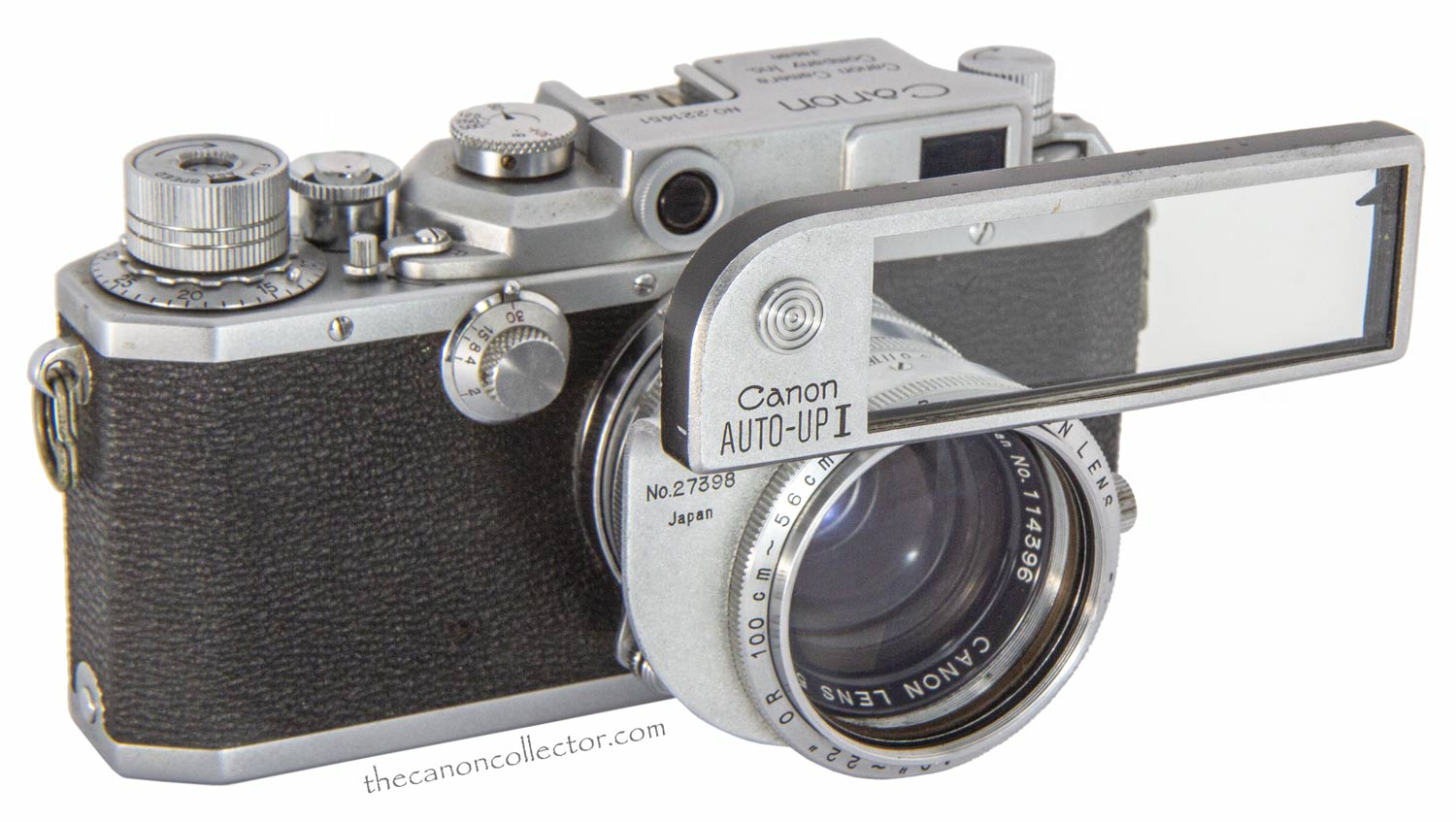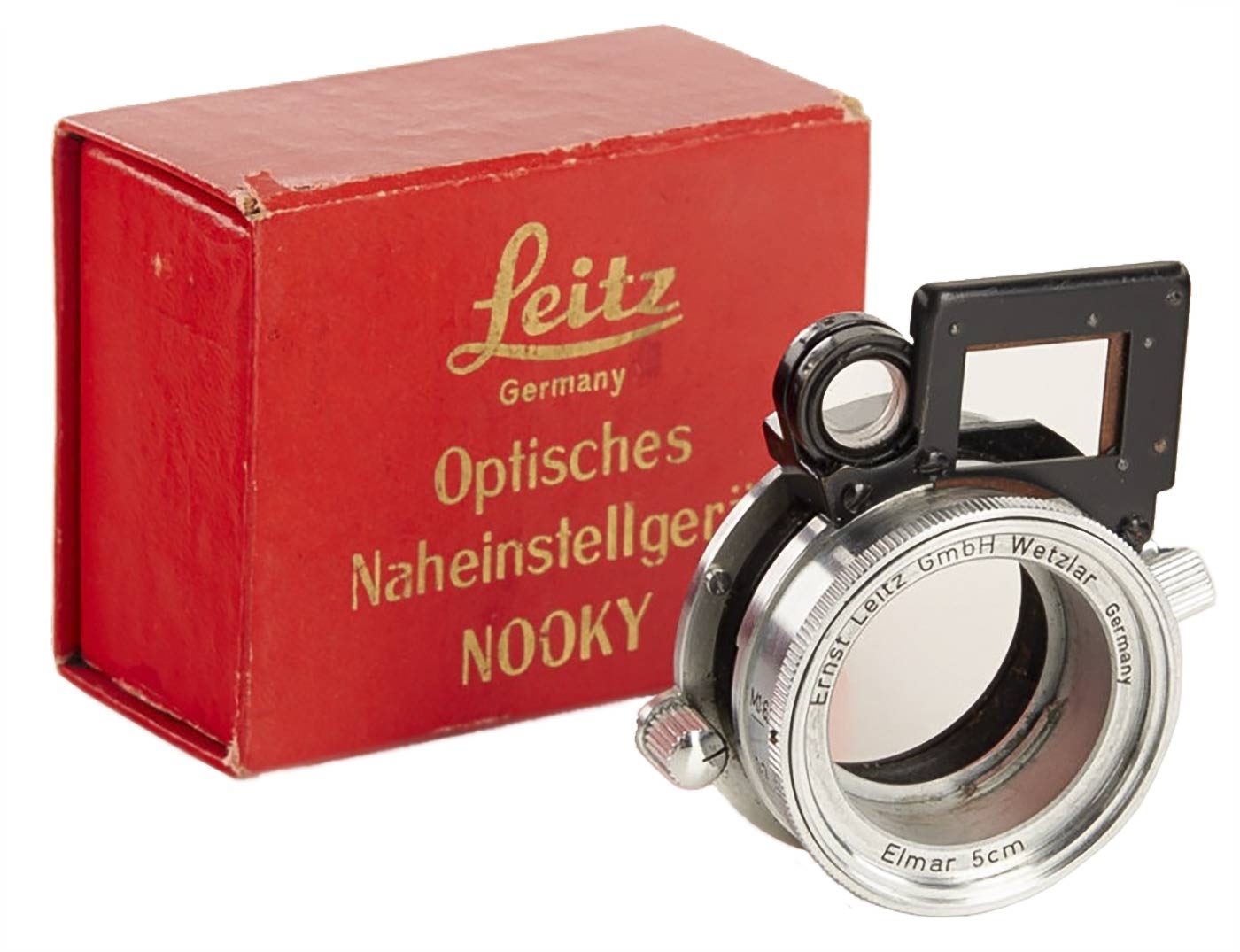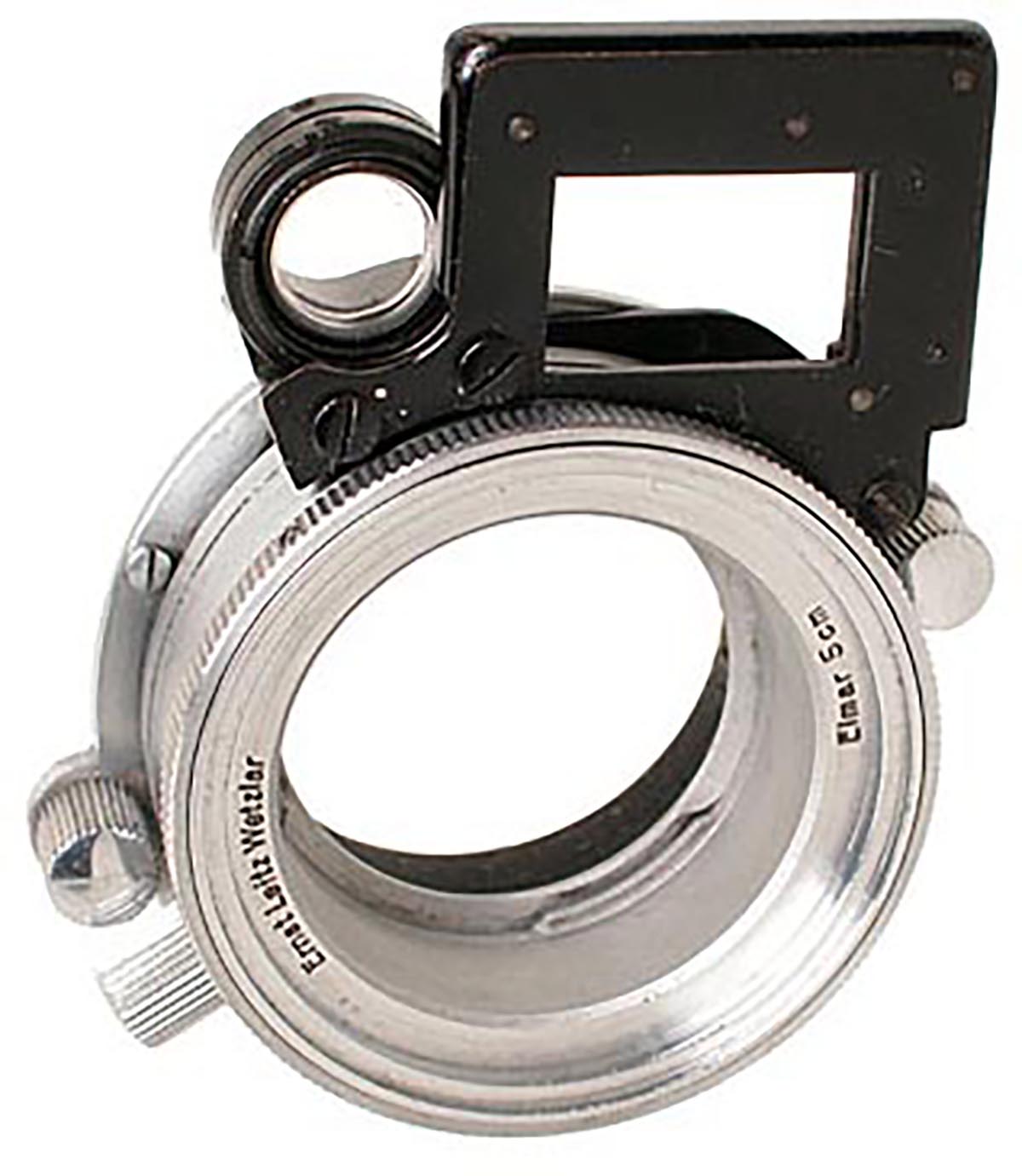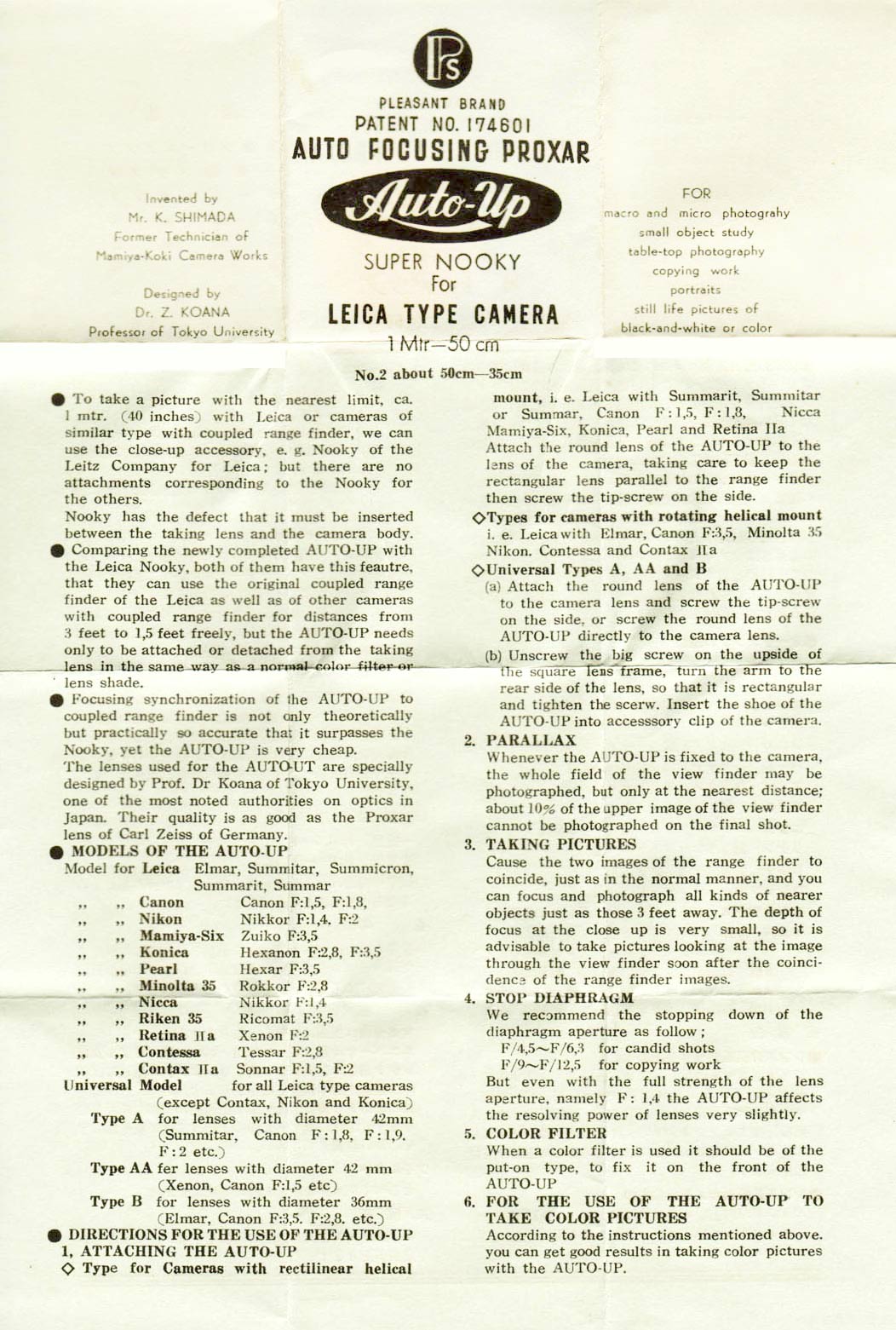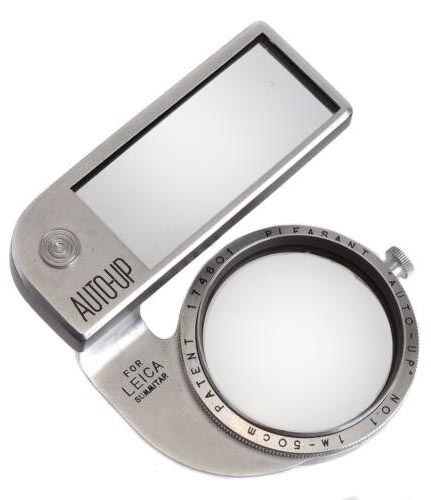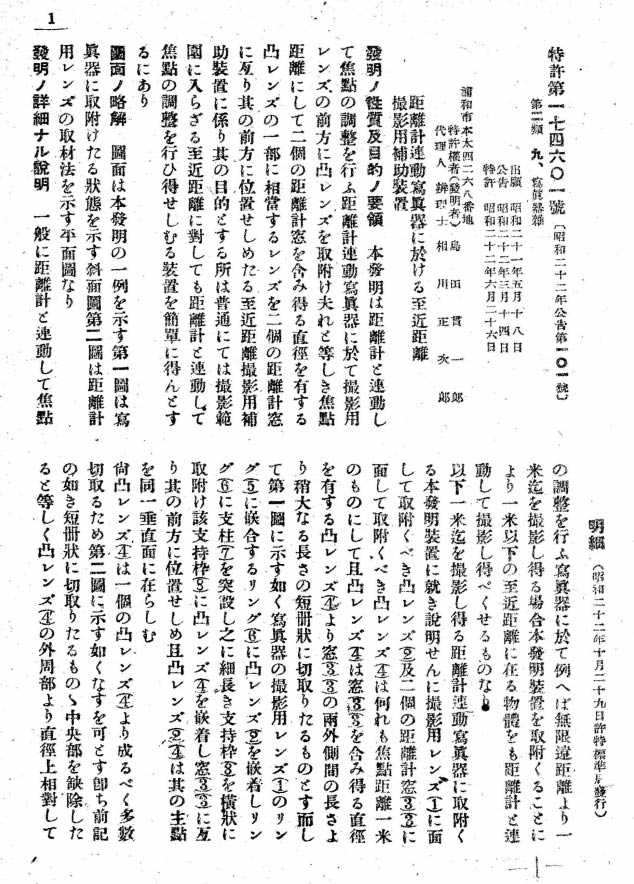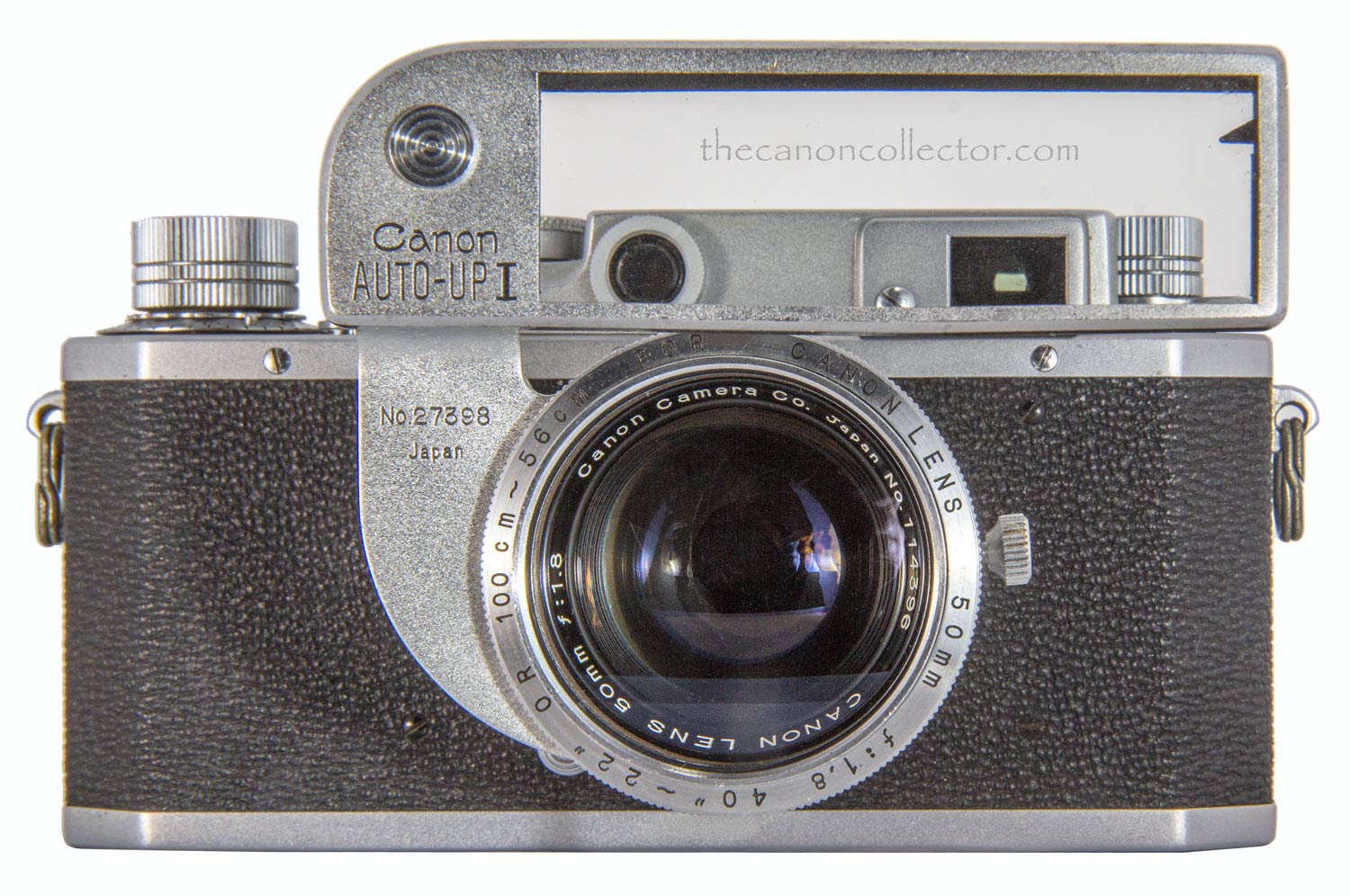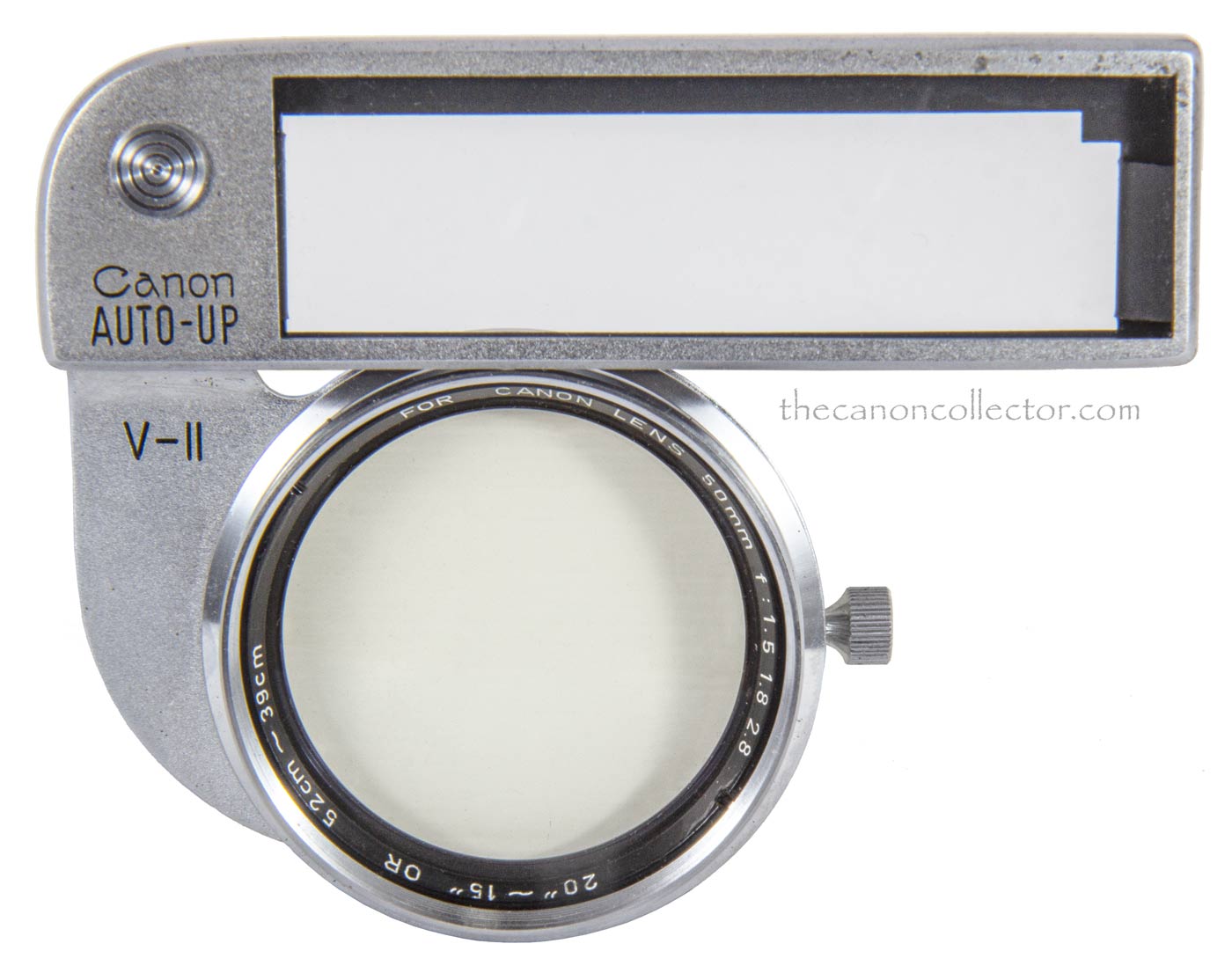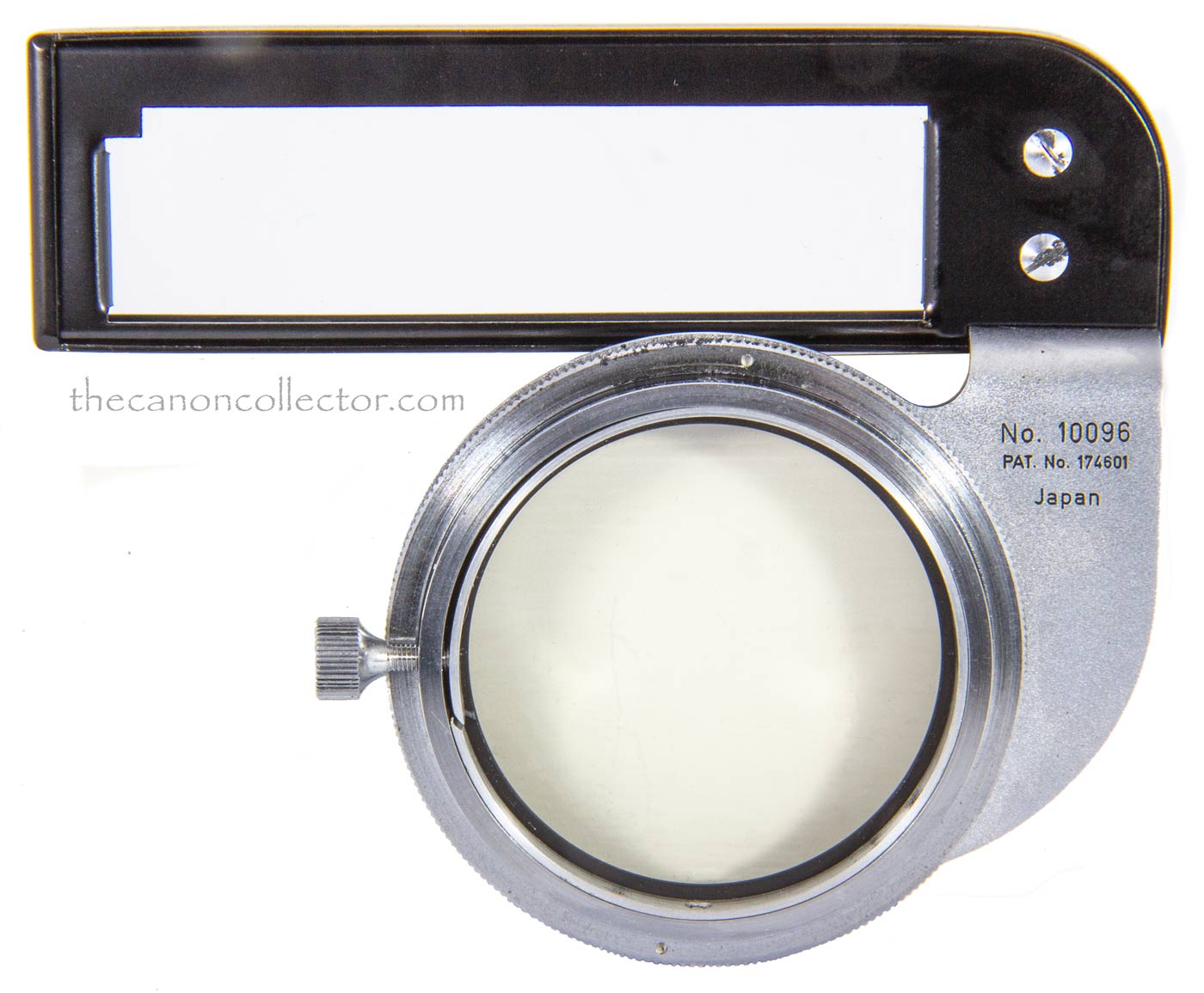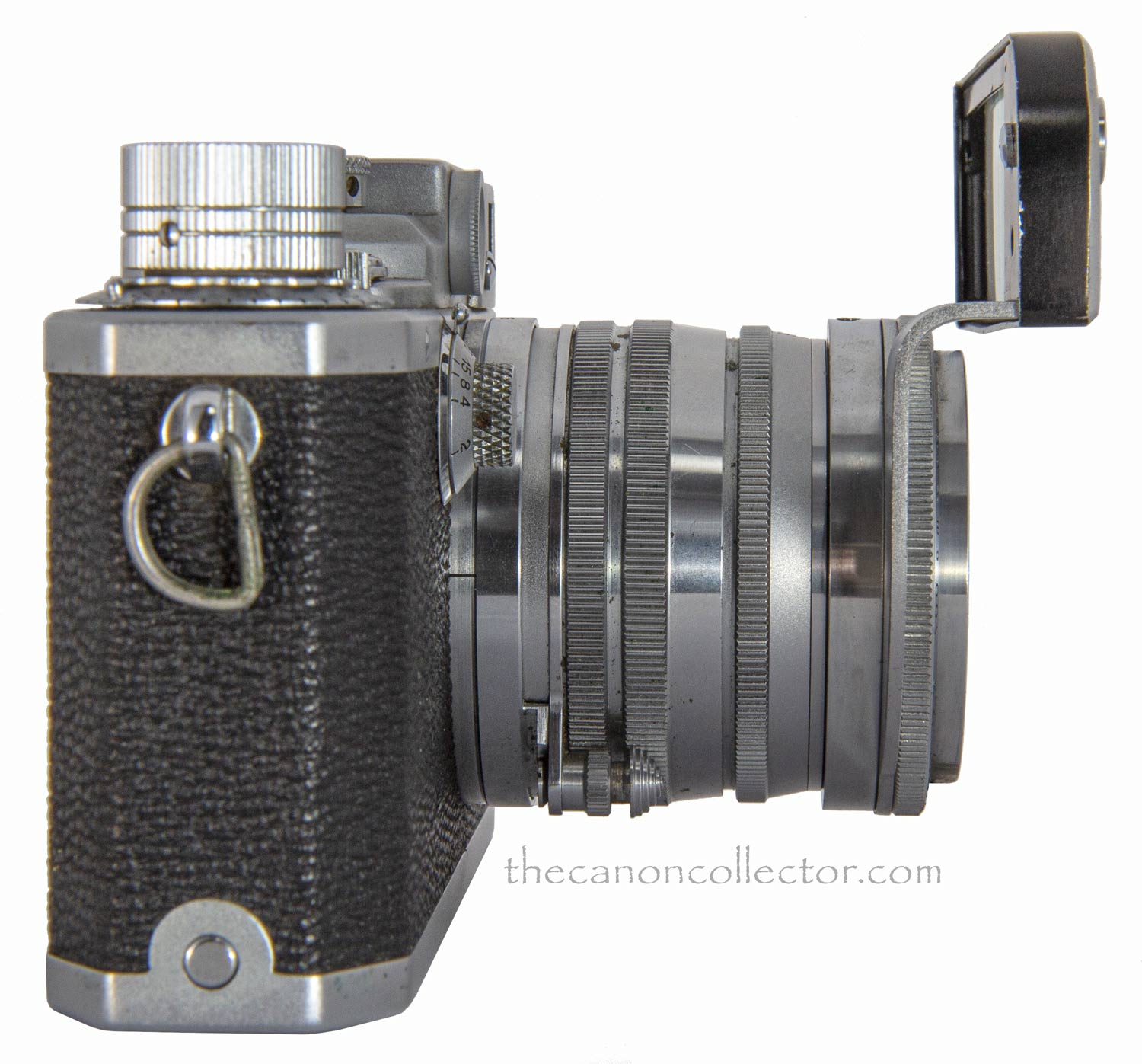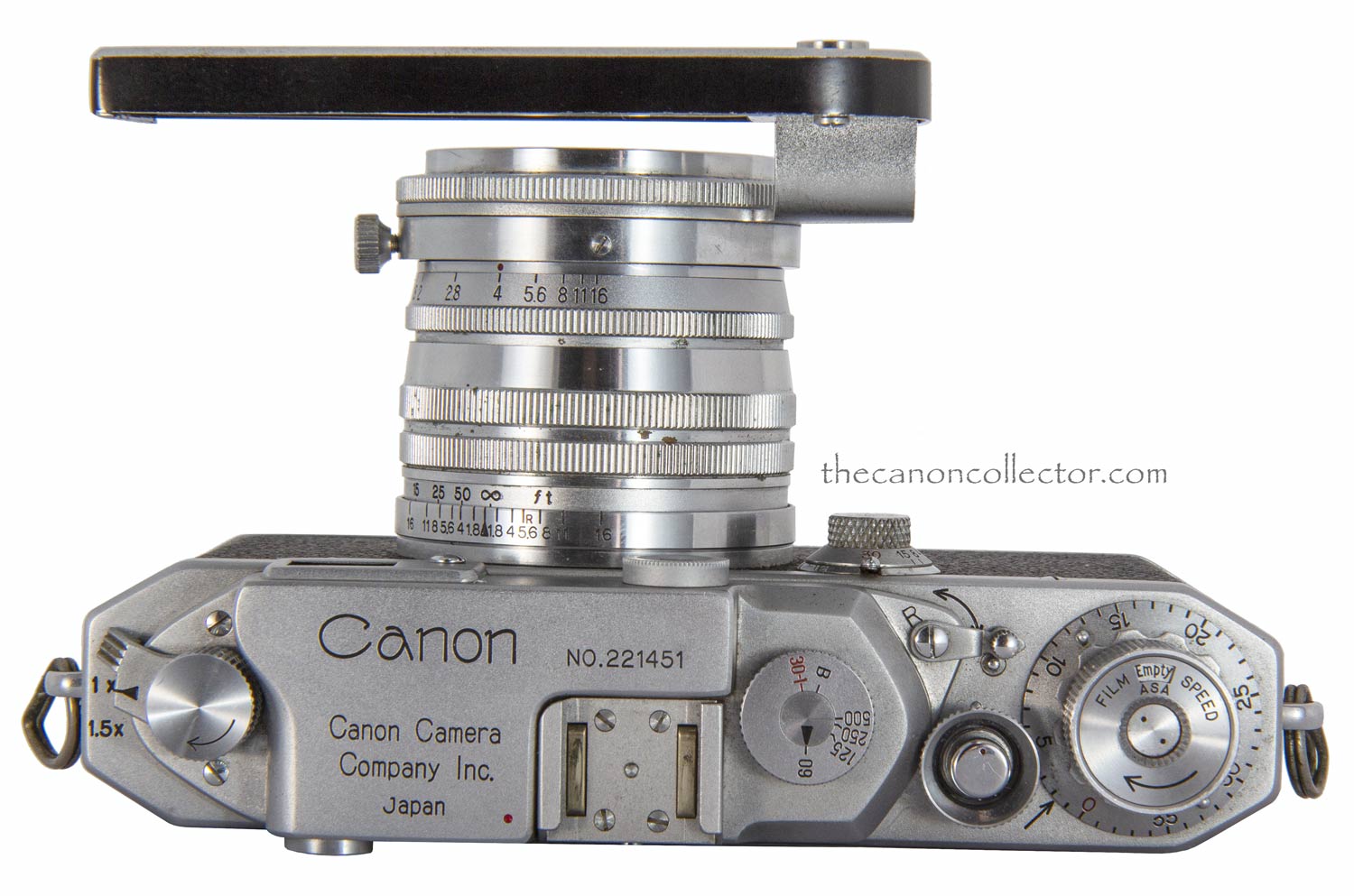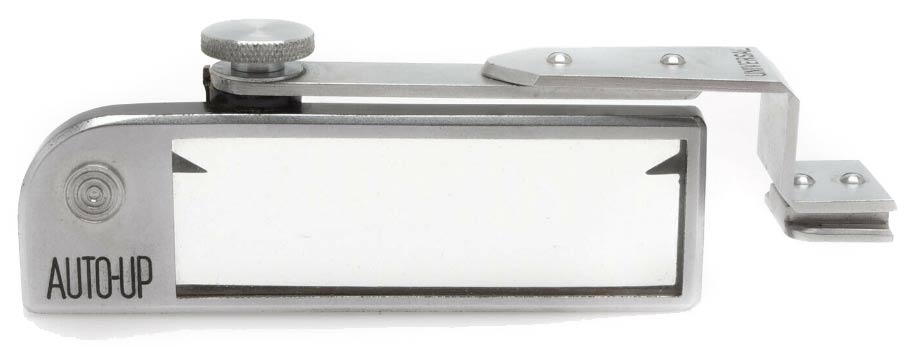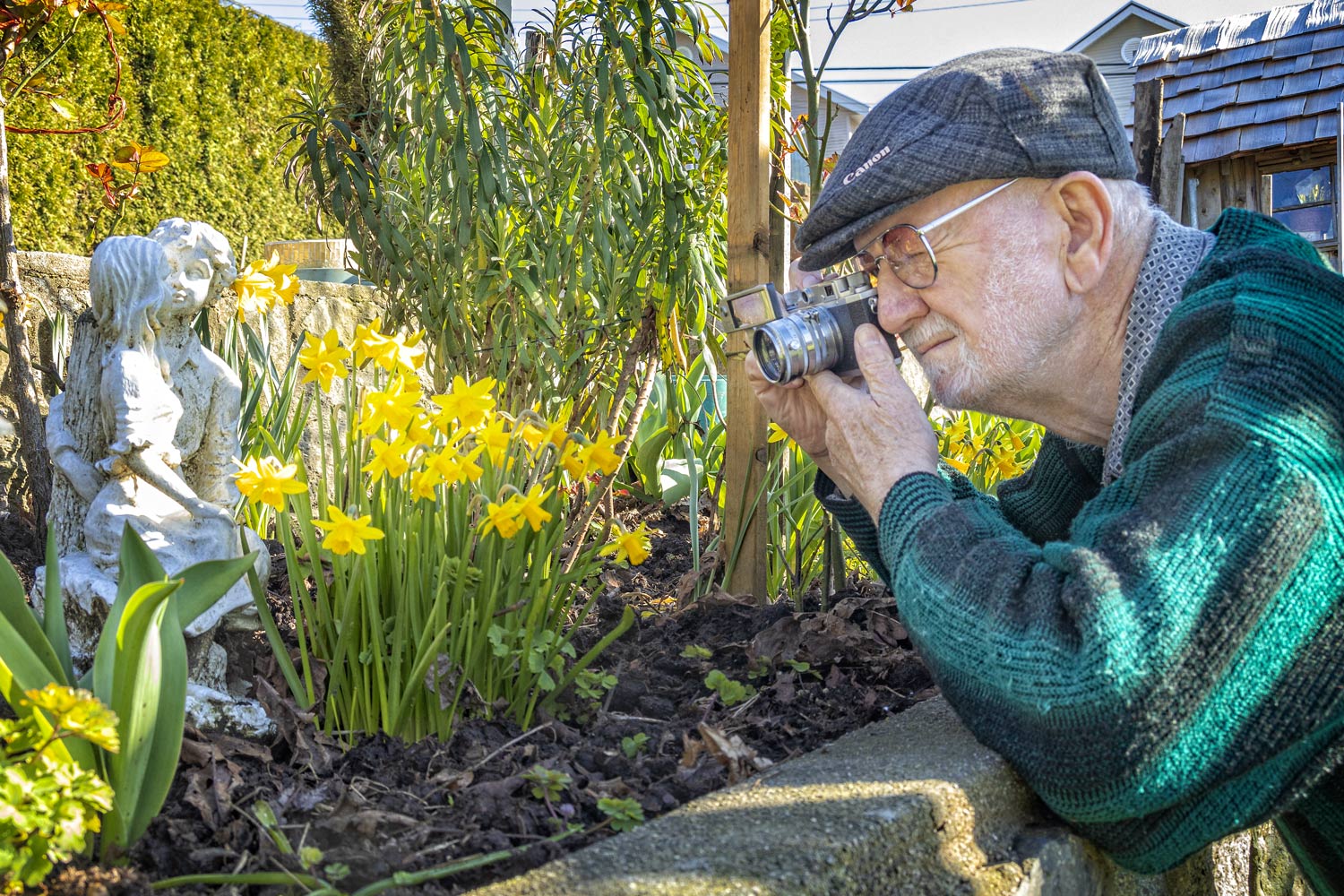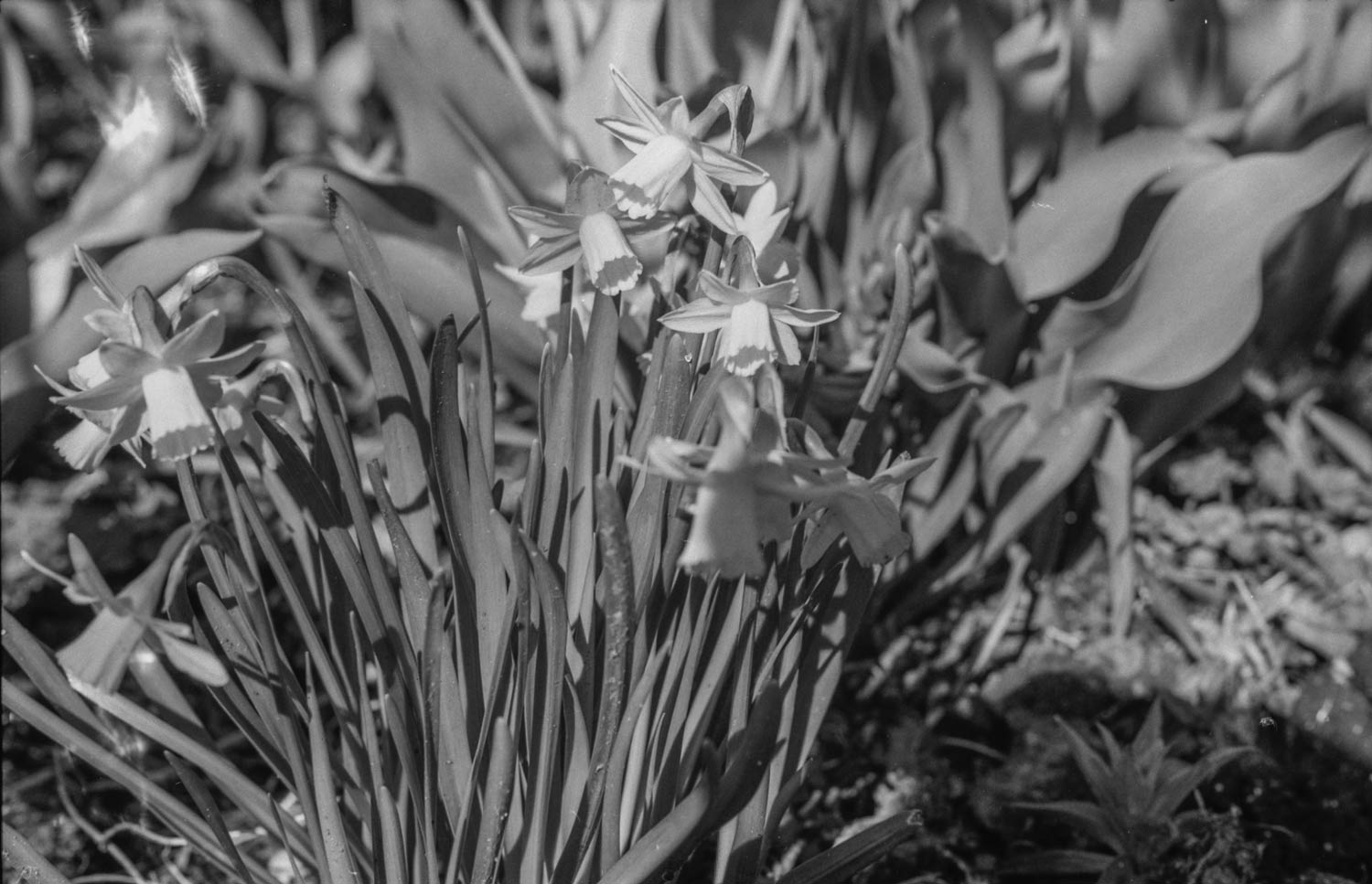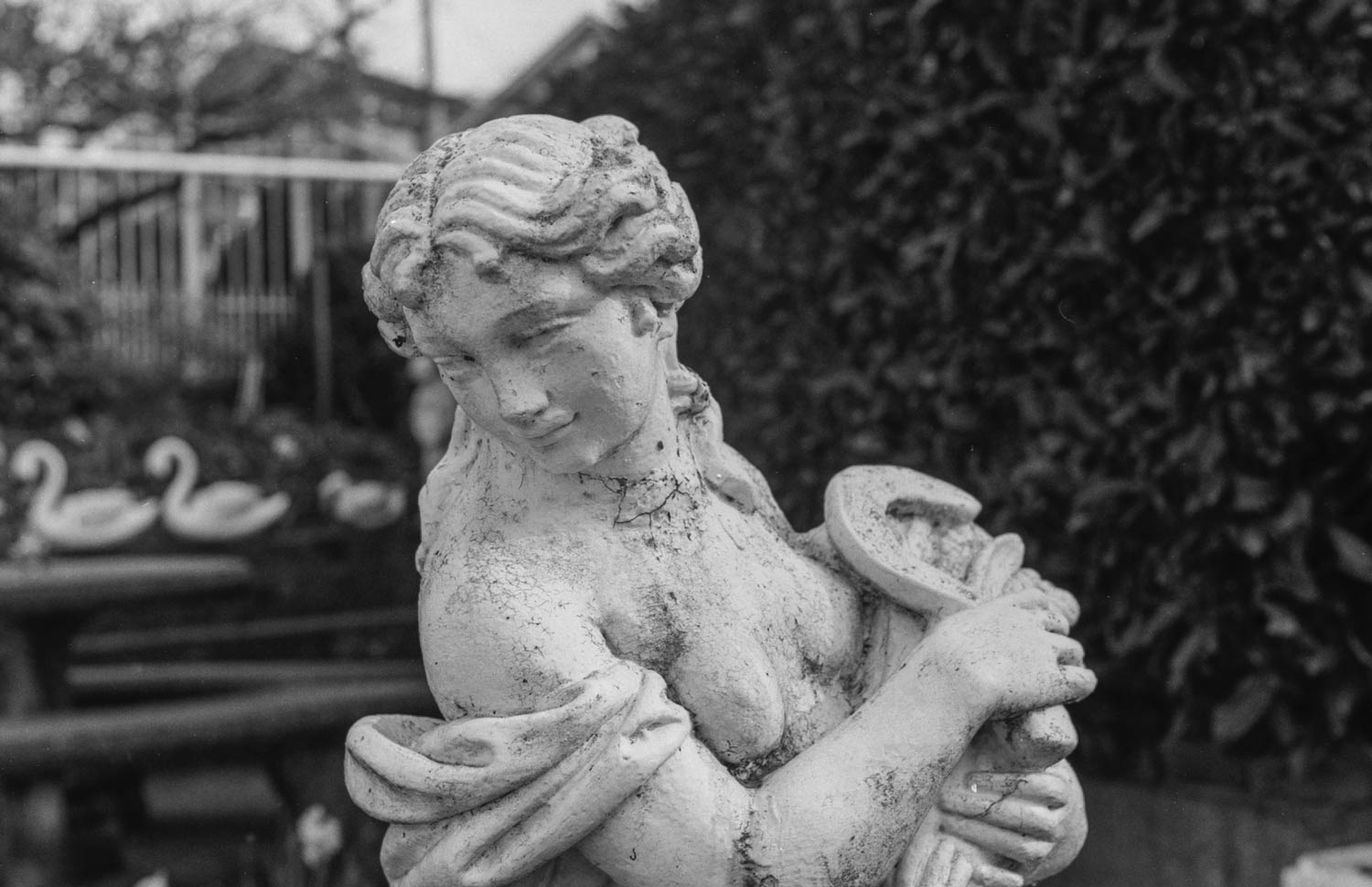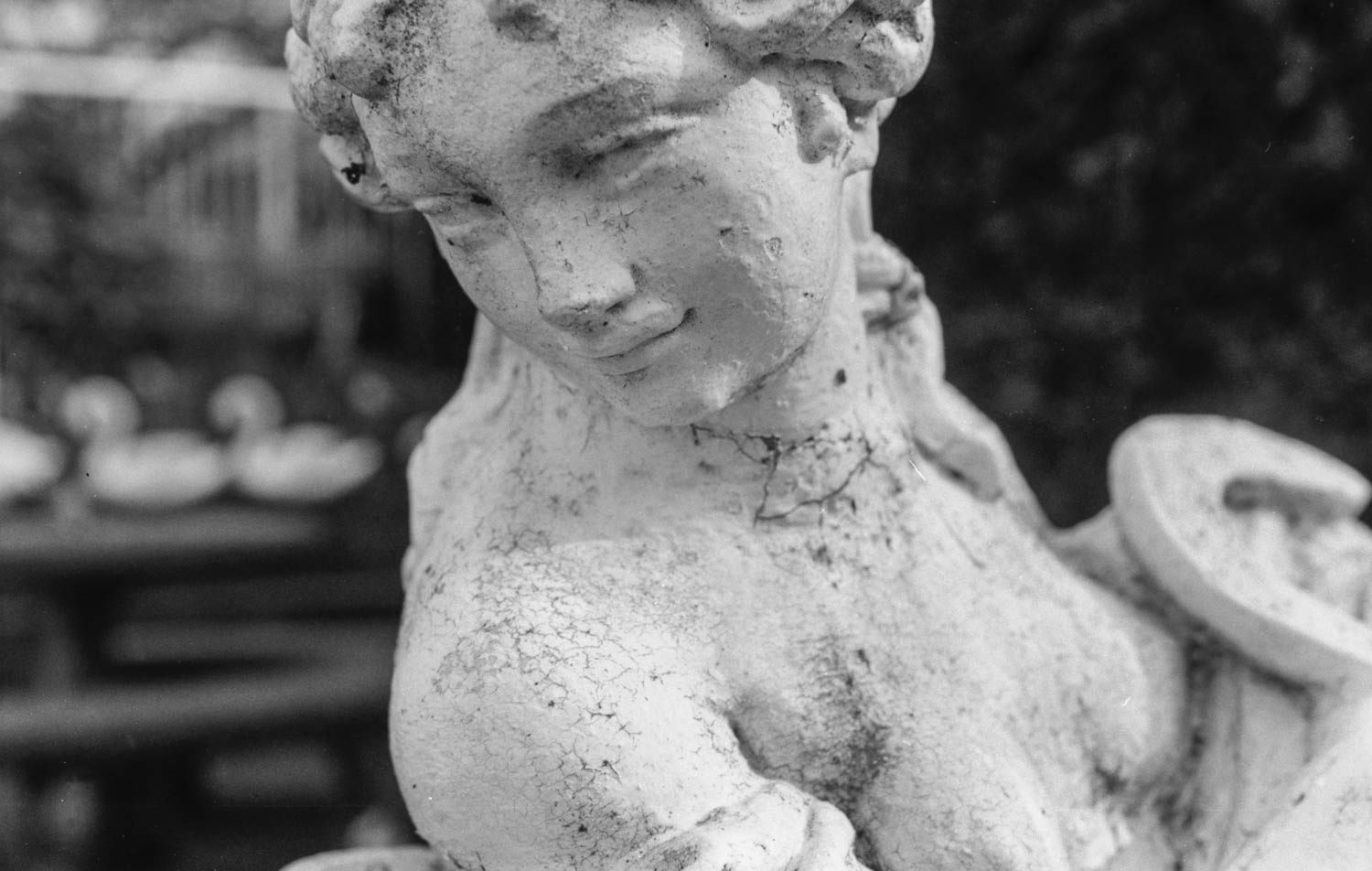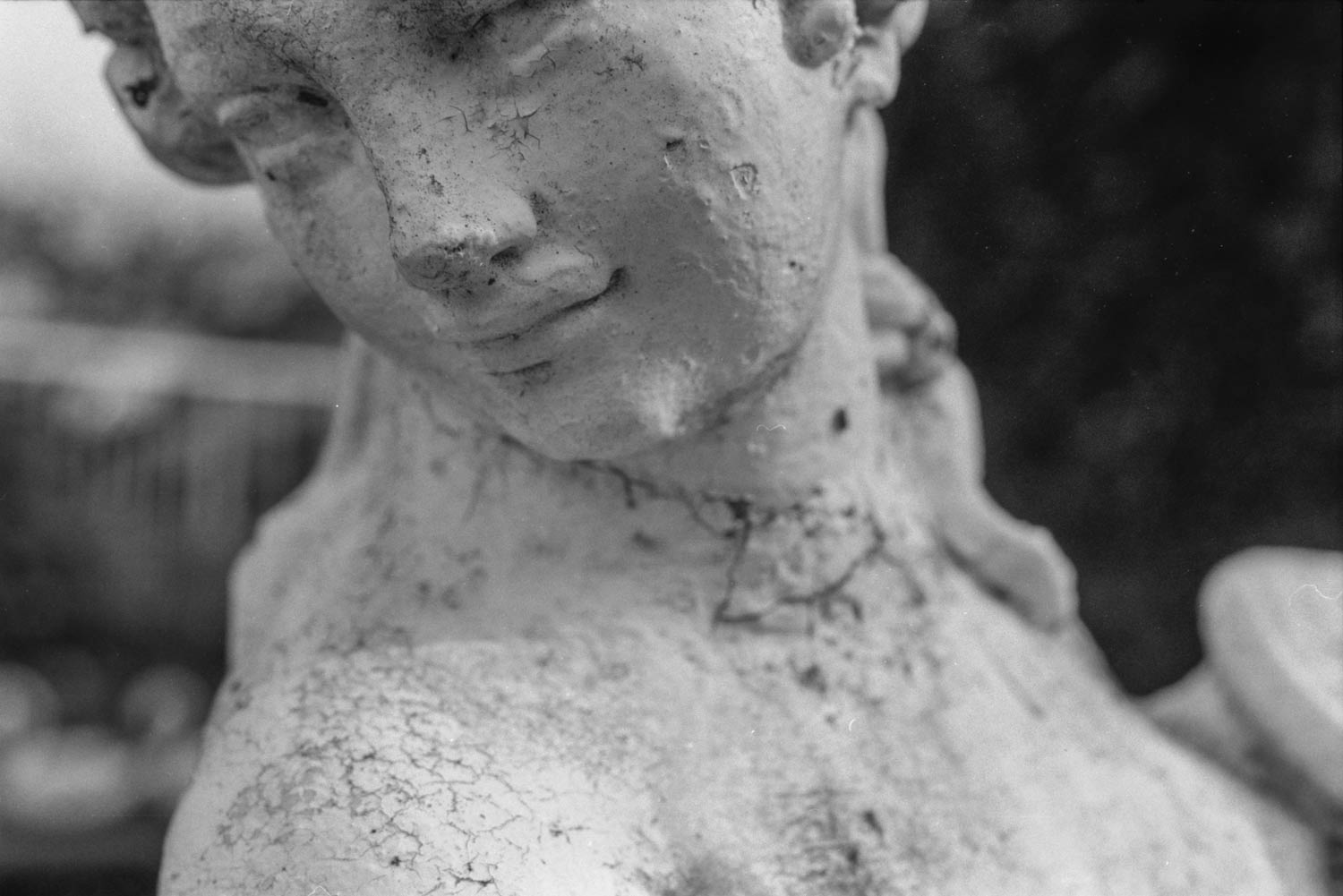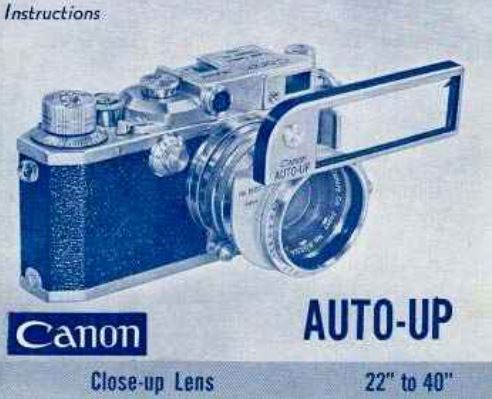The Canon Auto-Up
The rangefinder camera has a
problem with close-up
photography. All rangefinder
cameras do. The problems are
focus and parallax.
Because the viewfinder is offset from the
lens the closer you get to your subject the
less accurate is the viewfinder. That is the problem of parallax. In addition, the lens is coupled to the rangefinder only for the focus range of the lens. If you move closer, the rangefinder ceases to be useful.
Canon’s solution to these problems was a device they called the Auto-Up. It consisted of a close-up lens that was placed over the camera lens and a much larger lens that the rangefinder and viewfinder looked through. The added lens moved the focus range of the camera closer to the subject. The larger rectangular lens was calibrated to bring the rangefinder back to accuracy for the closer distances. Parallax was also adjusted for but that remained a problem, although, reduced in severity.
However, I am getting ahead of myself and there is a story to tell. As I have researched the Auto-Up I have found a great deal of confusion about this device and similar devices. So let’s get to it.
Pages from a Leitz catalogue dating back to the 1930’s list the Nooky and similar devices available for the Leica.
As you might expect, we have to go back to Leitz in the 1930’s to begin. The Leica camera System offered an amazing array of accessories for the Leica cameras. One of these was a device, rather a class of devices, that allowed rangefinder cameras to focus closer than the normal lenses allowed. One such device was the “Nooky”
In the thirties international communications were by telegraph and telegrams were charged for by the letter. To keep ordering costs down and to give identifiers that people could remember, accessories were given 5 letter names. Thus the strange name. Actually there were several devices with these strange names. Have a look at the Catalogue pages on the left.
The Nooky was an interesting device. It was essentially an extension tube into which an Elmar 50mm collapsible lens could be mounted. The Nooky itself mounted on the Leica II or Leica III camera. It was so constructed that it engaged the rangefinder cam in the camera body and as the unit was focused the rangefinder image in the viewfinder moved as well.
A lens was positioned over the rangefinder window and its power was such that the rangefinder in the camera gave accurate focus indications. Parallax problems were not solved totally.
The interesting thing to note is that no additional lens elements were placed in the image light path. The close focus distance was obtained soley by moving the lens further from the film. The original lens did the rest.
As the Catalogue pages above show, there were other devices for other lenses. There was one device, the ADVOO developed in 1959 for the Leica IIIg, that did use a close-up lens over the regular lens and a correcting lens for the rangefinder mounted in the equipment shoe of the camera and extended out over the rangefinder window. But with this exception, it appears that these devices added no optics to the light path.
The Nooky was simply an extension tube that attached to the front of the camera and into which the Leitz lens would connect. The Nooky was machined to work with the rangefinder of the camera but because the lens was now further from the film plane it would focus closer. The round lens on the top adjusted the rangefinder to read accurately for the new focal range. The rectangular viewfinder window went some way towards adjusting for the increased parallax.
Shimada created an Auto-Up for the Leica camera based on his Patent 174601. He uses the term “Proxar” which was the name of a close-up lens made by Zeiss of Jena. I assume that the term had become one of general application to close-up lenses generally.
This is the instruction sheet for the Leica Auto-Up. In the header you will see that the device is actually referred to as a “Super Nooky”. In this document you will see a list of the Auto-Ups that are available.
For the next development we have to go to post-war Japan where Mr. K. Shimada, a technician with Mamiya-Koki (yes, that Mamiya) invented and received a patent , Patent 174601, for a device he chose to call the Auto-Up, being short for Automatic Up-Close. Unlike the Nooky, this device used a close-up lens that mounted over the normal lens of the camera and attached to it was a long rectangular lens that the rangefinder and viewfinder windows looked through. By matching the two added lenses it was possible to bring the camera closer to the subject but still rely on the rangefinder.
Shimada brought this device to market as the Auto-Up under the “Pleasant” Brand. I have been able to find almost nothing about this product except for some being offered on E-bay.
I was able to search the Japanese Patent Office and find a copy of Patent 174601. Unfortunately, it is in Japanese and I cannot read it. I will find someone to help me one day with this.
Shimada offered various models of the Auto-Up for different cameras including Yashica, Konica, Nikon, and, yes, for Leica.
All of these devices were very well made and beautifully finished. They attached to the front of the lens using a thumbscrew which clamped them in position. The format of the Auto-Up had to be altered depending on the camera and lens it was intended for depending on the arrangement of the viewfinder and rangefinder windows. And of course, the lenses had to be ground differently for different focal lengths and lens barrel diameters.
Some manufacturers actually put out their own versions with their own brand names on them. What arrangements were made I don’t know but I assume there was some type of licencing agreement.
It would be interesting to collect these close-up attachments as there are so many of them and they seem reasonably priced in to-day’s market.
Compare this Canon Auto-Up with the Pleasant Brand one immediatly above. With the exception of the Canon name they appear identical right down to the roundel decoration.
The Canon Auto-Up
And so we come to the Canon Auto-Up. But wait a minute! The same name as Mr. Shimada’s product. And it looks identical! Really identical as if it had come from the same assembly line. Well, I think it did.
Below is the front and back of the Auto-Up V-II. Look at the back on the right side. There is a serial number and ….. a Patent Number. Do you recognize it? You should.
About the time the Canon Auto-Ups began to appear the Auto-Ups under other names disappeared from the market. And Canon began using the same Patent Number. The only explanation seems to be that Canon acquired the “Pleasant” Brand and came into possession of the Patent. From then on the Auto-Up was a Canon accessory.
Reading the Name Ring we see this Auto-Up was for the Canon Lens 50mm f/1.5, 1.8 or 2.8. The important thing was focal length and lens diameter. Being a Model II it would bring the lens down to 20″ to 15″.
The Auto-Up I have examined several dozen of these devices and there are only a few actual models. The first Model, called simply the Auto-Up, says on it that it was “for ‘Serenar’ f/1.9 50mm Lens 40″ – 22″ ” We know that Canon stopped using the Serenar brand name in 1953 so the acquisition of the patent had to predate that year.
The next model after the name change, was identical. The name engraved on it was “Canon Auto-Up” but it was for the Canon Lens 50mm f/1.8. This was the rigid lens that replaced the F/1.9 Serenar. It to was for distance of 40″ to 22″.
Auto-Up I and Auto-Up II Canon then divided the Models into Version I and Version II. Version I was the old Auto-Up we have just been discussing for the range 40″ to 22″ and Version II was for the range 20″ to 15″. The name you will find engraved on them is “Auto-Up I” or “Auto-Up II” but the Name Ring will say for 50mm f/1.8, or f/1.5.
There was a model of the Auto-Up that had a close-up lens and viewing lens that were not connected. According to the box it was for a 50mm f/2.8 lens. The viewing lens had an arm that slipped into the cold shoe on the camera to hold it in place. The close-up lens simply screwed into the camera lens. Looking at the images above, there seems to be different versions of this type of Auto-Up. More research is needed. These two images are from E-bay vendors.
Auto-Up V When Canon came out with the V series cameras to compete with the Leica M-3, cameras like the VT (1956), the L2 (1956) and the L1 (1957), they widened the distance between the viewfinder window and rangefinder window to give more accurate focusing. It is my assumption that at this time they came out with the Auto-Up V attachements which were optically designed to take this wider arrangement into account. The engraved names are the “Auto-Up V-I” and “Auto-Up V-II”. In the literature they are also revered to as “Auto-Up V No. 1” or “Auto-Up V No. 2″. Once again the No. 1 is for distances 40″ to 22″ and the No. 2 is for 20″ to 15”.
There was also an Auto-Up V that had a separate closeup lens and the viewfinder / rangefinder lens mounted in the equipment shoe of the camera. I don’t have one of these yet as the prices on E-bay seem out of line, especially when you add in the cost of delivery! I will wait and prowl the camera shows for this little jewel.
This is my Auto-Up 900 mounted on my Canon Lens 50mm f/1.4 (Serial No. 17153). The camera is my Model 7 (Serial No. 835527).
Auto-Up 450 and 900 When Canon introduced the Model 7 with its beautiful large viewfinder the Auto-up’s required serious updating. The distance between the two windows was now even larger and the viewfinder window was very large. The result was the Auto-Up 450 and 900. The Canonflex being just around the corner these were the last in the Auto-Up series.
The Viewfinder lens was made wider and deeper, wrapping around the top of the lens. This gave a much improved viewing experience for the user.
The Auto-Up 450 (sometimes refered to as the No. 1) moved the focus distance up to 20″ to 15″. The 900 (sometimes referred to as the No. 2) moved the focal range out to 22″ to 40″. Although easier to use, they operated the same as the others.
Both the 450 and the 900 came in lens diameters of 42mm, 50mm and 57mm to accomodate different 50mm lenses.
Some of what I have written on these interesting accessories is conjecture on my part and I have tried to point out those areas where I am uncertain. With more study we will certainly revisit this page in the future. However, all this history does not get us to the essential question: how well did these things work? Well, that’s next!
The setup was easy. I used my Model III with the rigid 50mm f/1.8 Canon Lens attached to the Auto-Up I. I hand hel all of the pictures. Film was Ilford Professional 100 shot at an ASA of 100.
Using the Auto-Up
Well, all of the talk is fine but do these things work? I set out to find out. My budget was one roll of film which turned out to be instructive but not enough. My first discovery was that the Auto-Up requires some practice.
The problem is not focus. The rangefinder appears to work fine through the Auto-Up. But parallax and composition are not so easy. I think it would require a few rolls of film to figure this out. Generally, the image in the viewfinder is higher than the actual image on the film. So the picture comes out too low. So the lesson is to take your time, read the manual completely and practice.
However, lets look at some pictures. I took two sets of pictures, three in each set. I was using the Auto-Up I on my Model III with the rigid 50mm f/1.8. Images were hand held, the first without the Auto-Up with the camera as close as possible to the subject. The second was with the
Auto-Up I with the camera set to maximum distance. And, of course, the last was with the camera set to minimum distance. Film was Ilford Delta 100 Professional. The negatives turned out a little contrasty but they will serve for our purposes. All of the images are the full frame.
This is the scene taken with the above setup. In this image no Auto-Up is used with camera set to minimum distance; about 3.5 feet.
With the Auto-Up I attached and set to maximum distance, about 40″. Focus was on the highest daffodils in the center if the image.
This manual is not of great quality but it is the only one I have so far. The instructions are readable but good luck with the tables at the end!
As you can see, focus is accurate, and, it is easy. It is centering your image that is the problem. It is more difficult than the instruction manual seems to suggest.
Another problem is keeping your fingers off of the glass in both lenses. But here’s a hint: grab the Auto-Up between thumb and forefinger on the decorative roundel on the upper corner of the frame above the name. Here you can get a good grip without touching any glass.
The Auto-Up is a serious device and it solves a problem for rangefinder cameras. However, with the arrival of the single lens reflex camera it became superfluous.
There are lots of these around and they make a good subject for collecting in themselves. I don’t have a complete collection but I am in no hurry. There is so much other stuff out there that my hands will be full well into the future. And besides, E-bay delivery prices equal or exceed the price of the Auto-Ups! Not good economy.
This website is the work of R. Flynn Marr who is solely responsible for its contents which are subject to his claim of copyright. User Manuals, Brochures and Advertising Materials of Canon and other manufacturers available on this site are subject to the copyright claims and are the property of Canon and other manufacturers and they are offered here for personal use only.

